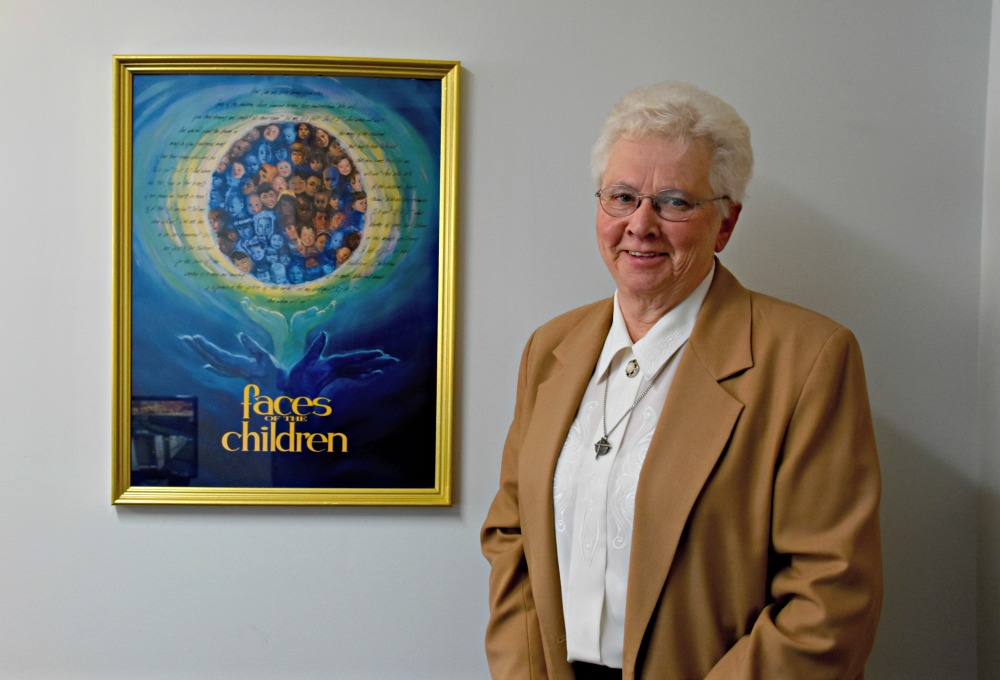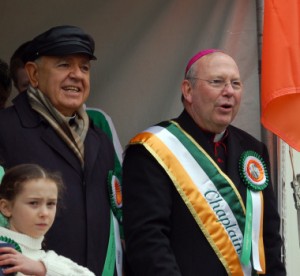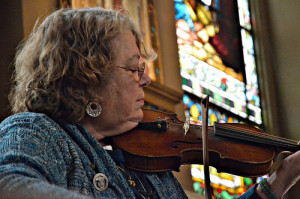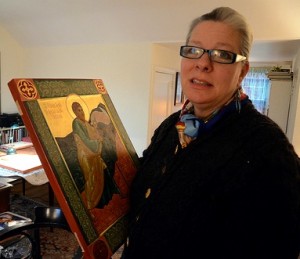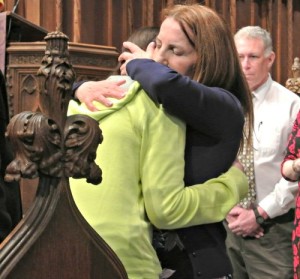
Lorna Byrne
On a St. Patrick’s Day that began with Jimmy Lynn’s fabulous and noisy breakfast at the Plough & the Stars and was followed by a solemn and chilly commemoration at the Irish Memorial at Penn’s Landing, I couldn’t have foreseen the sacred and truly spiritual afternoon that would crown my day at St. Paul’s Episcopal Church in Chestnut Hill. But that’s the wonderful thing about being Irish in Philadelphia on March 17th; you never know what the day will bring.
For me it brought Lorna Byrne, an Irish woman whose earliest memories are of the angels who have always been a presence in her life. Lorna sees angels the way most of us see other people; to her, these ethereal beings are a very solid physical manifestation. And, she assures us, every single one of us has our own guardian angel following us at all times.
It’s a comforting thought, and only one of the many encouraging messages that she has been chosen to share with the world.
As a young girl, her relationship with the angels meant she spent her days in almost a cocoon. They talked with her, she laughed with them, they even played hide and seek together. Her separateness from the world around her led to her being given a diagnosis of “retarded.” Lorna was born into a poor Dublin family in 1953, a time when anyone labeled as different in any way was automatically considered to be somehow mentally deficient. Teachers basically ignored her, and it didn’t help that she was actually dyslexic. Although the angels were adamant during those years that Lorna tell no one about them, they also revealed to her that one day when the time was right, she would write a book and share their existence with the world. At the time, Lorna laughed because her dyslexia meant that she couldn’t read and could barely write; she hardly felt she was the one who would write a book about anything. But as with everything the angels told her, they were correct in this, too.
She used to ask the angels, “Why me?” And their response was “Why not you, Lorna?”
This past Sunday, Lorna spoke to a crowd of more than 550 people who attended her free appearance at St. Paul’s, an audience made up of both those who had read her books and followed her for years, as well as others who came because they were hearing about her for the first time and wanted to learn more. The format took shape as a one hour interview, with Lorna being questioned by Rev. E. Clifford Cutler, the rector of St. Paul’s, followed by a 30 minute question and answer period with the audience. But it was the nearly two hours of blessings that Lorna stayed and gave to every single person who wanted one after the 90 minutes of interviewing that left those who had gathered there awash in a wave of peacefulness and tranquility.
The Archangel Michael gave Lorna the prayer that she recites in her blessings, and that she has had it printed on cards for the audience to take with them:
“Pour out Thy Healing Angels,
Thy Heavenly Host upon me
and upon those that I love.
Let me feel the beam of Thy Healing Angels upon me,
the light of Your Healing Hand.
I will let Thy Healing begin
Whatever way God grants it…Amen.”
Lorna’s messages are about love, acceptance, and being the best we can be during our physical time here on earth. The God she knows doesn’t have a single religion; His angels are gifts to everyone on earth regardless of the faith they follow. Here are some of the words she shared with those who joined her in Chestnut Hill:
“The angels have always been my best friends, my companions, my teachers,” she explained. “But I suppose the important thing to say to all of you is that each and every one of you, no matter whether you believe, or if you’re a skeptic, or what faith you have, or what religion you have…each and every one of you has a guardian angel that God has given you. And your guardian angel never leaves you for one second. So you’re never, never alone and you’re loved unconditionally.
“But I suppose the other thing is that the guardian angel is the gatekeeper to your soul, and I’m afraid you can’t throw that gift away that God has given you. You can ignore it, and you can do your best and deny it, but I am traveling the whole world and I have never seen any man, woman or child without a guardian angel, and it doesn’t matter what religion you are.
“So it is to be conscious and aware that you have a guardian angel and that has been one of the most powerful messages that has come out to the world since I have written the book, ‘Angels in My Hair.’ Angels, I have to say to you, are neither male nor female. Just sometimes they give a human appearance within themselves so we can recognize them. If they didn’t, we wouldn’t.
“And again, it’s to teach us that…material things are important, we do need material things. But they’re not the most important thing. And, if for some reason, your life, you know, creates a lot of material things, you’re actually meant to share them. Because you can’t bring any material thing with you when you die. Your soul brings no material thing whatsoever, just the love and all of the good things you have done. And even too the hurt and pain, but it’s not as if that hurt and pain at that moment is washed away, straight away, because when your guardian angel takes hold of your soul and brings it forward to come out of your human body, you know God is real. You know you are a spiritual being as well. And you know you are being reborn. And that is an important thing to remember. And that is one of the very strong messages in both books, that when you die it’s only your physical body that dies. You actually live forever.
“And, I’m afraid, God IS real, and so is your guardian angel and all those unemployed angels that are here as well, in hope that you will ask your guardian angel to allow an unemployed angel to help you within your life. And, to me that is fantastic. God is real. Don’t wait til the last moment of your life to realize that. Change the world for the better. We all have that opportunity…lots of adults say to me, ‘But my life is insignificant. I have done nothing.’ But your life is very precious, and the most important gift God has given you is to live life, and everything you do within your life is accountable. But everything as well is that you’re changing everyone else’s life every time you do good. Every time you reach out and help someone, even if it is just a smile. I always have to smile at the angels, you know.”
You can read more about Lorna Byrne at her website and order her books here as well.

